| s/y Nine of Cups Badlands National Park- South Dakota June 2012 |
| More National Parks and Monuments? American Odyssey - Part I? (Las Vegas to Denver) American Odyssey - Part II? (Denver to Boston) Roadside Americana? Birds of North America? Wildflowers of North America? |
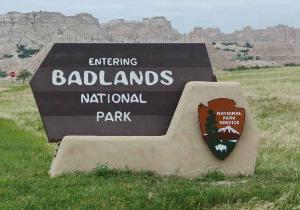
| Badlands National Park in southwest South Dakota preserves nearly a quarter million acres of sharply eroded buttes, pinnacles, and spires blended with the largest protected mixed grass prairie in the United States. There are two Visitor's Center in the park and we visited both. |
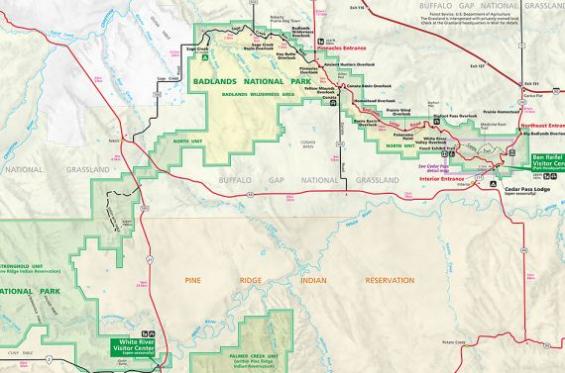
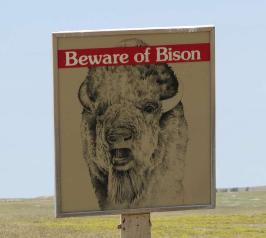
| The Buffalo Gap National Grasslands pretty much surrounds the park and the prairie wildlife is abundant. |
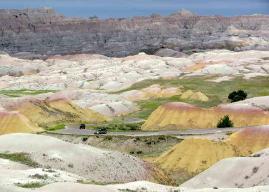
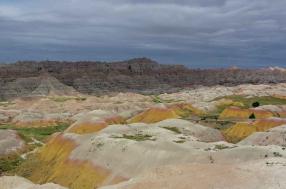


| We were camped nearby and headed out along the Badlands Loop Road early in the morning to avoid the 100F afternoon heat. The Yellow Mounds Overlook was particularly impressive. We stopped mid-morning for pancakes at a picnic area. |
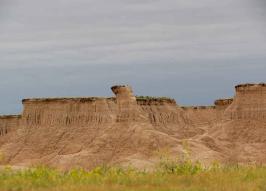
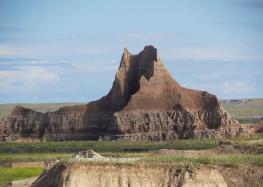
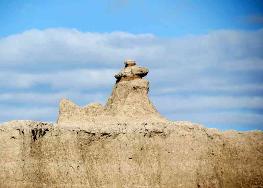
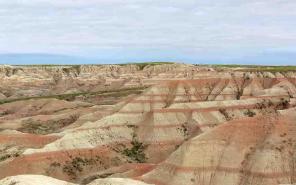
| The weather was hot and fine and the landscape was distinctive and astounding. Buttes, rugged peaks, mushrooms and sharply contrasting, striated geographical formations were everywhere. We ooohed and aaaahed and tried to capture it all, but the slightest change in sun or clouds provided a whole new aspect to the view. |
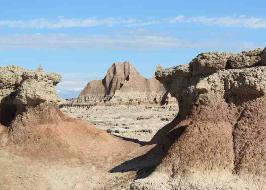
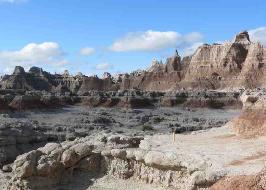
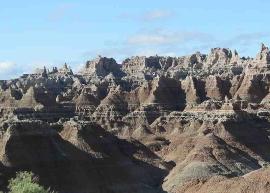
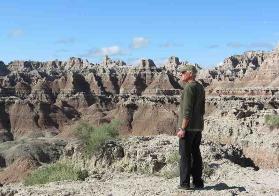
| The Loop Road provided access to several overlooks and trails. Above, the well-marked Window Trail meandered through moonscape terrain over dry, parched land. |
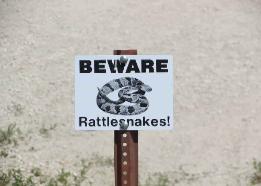
| Despite the fact we've seen our share of prairie dogs in Colorado, we still enjoyed spending some time watching these black-tails at one of the many "dog towns" in the park. This critter's propensity for digging holes provides home for other animals as well including burrowing owls and snakes who sometimes thank their hosts' hospitality by eating them. We could hear the dogs' whistles throughout the town. Some stood sentry while others tried to corral their kids to take them for a walk. |
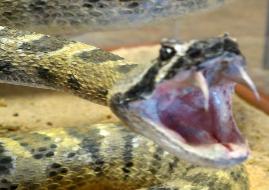
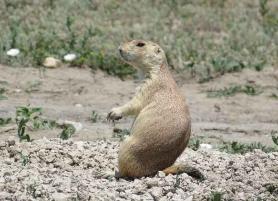
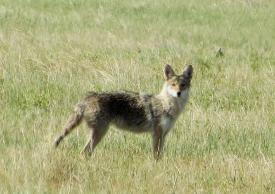
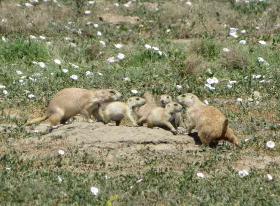
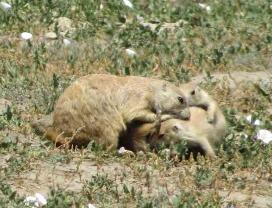
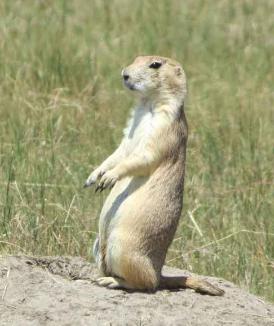
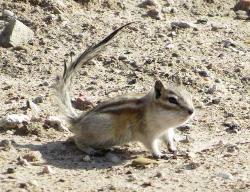
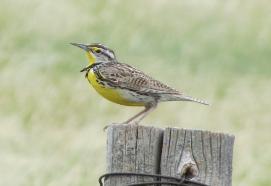
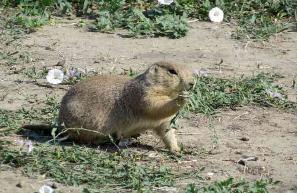
| Despite the harshness of the climate and the geography, we spotted several animals. We were especially conscious of the rattlesnake population (this photo is a stuffed fellow in a park center exhibit). We saw several coyotes in the thick prairie grass. Meadowlarks sang their sweet morning songs midst lots of competition from their relatives. |


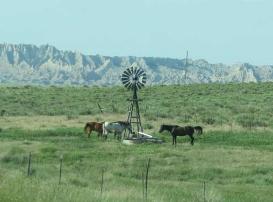
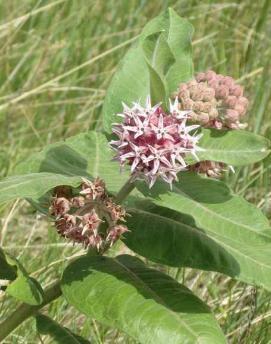
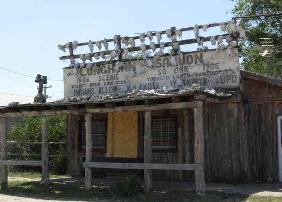
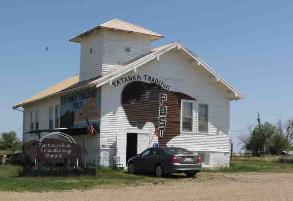
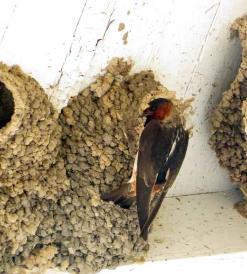
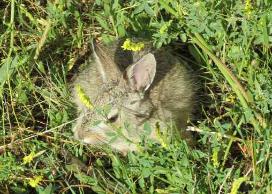
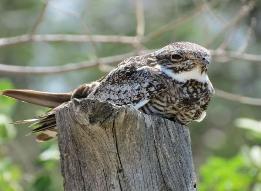
| In the morning, we saw small critters at every turn. Later in the day, everyone went to sleep. Above, a prairie dog eating breakfast; a ground squirrel; a falcon chick and a bunny. |
| The Buffalo Gap National Grasslands are one of 20 publicly-owned National Grasslands administered by the USDA Forest Service. The Buffalo Gap covers 597,178 acres in southwestern South Dakota and contains a surprising diversity of plants and animals. In fact, it's one of the most extensive, productive ecosystems in the United States. Over 100 species of animals and 250 species of birds have been identified in the area. Above from left, milkweed coming into bloom; foxtail barley grass sways in the wind; colorful cone flowers and purple prairie clover provide sharp color contrast to the ocean of green grass. |
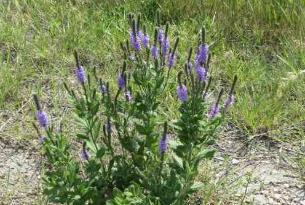
| There is some private land midst the grasslands and national park where bucolic views of windmills and grazing horses abound. The tiny town of Interior boasts several deserted buildings like the Longhorn Saloon above. The Tatanka Trading Post is still in business, but the cliff swallows under the eaves seem to be the most common guests. |
| In 1981, the discovery of black-footed ferrets alive and well in Wyoming and previously thought to be extinct, was astonishing news. Shrinking prairie habitat, disease and the destruction of their main food source, prairie dogs, left these rare mammals close to extinction. A "save the ferret" campaign launched by the US Fish & Wildlife Service and subsequent successful breeding efforts allowed the release of 36 ferrets into Badlands NP in 1994 which now seem to be thriving. Though we didn't see any (they're nocturnal critters), the park rangers were encouraged by their increasing population. |
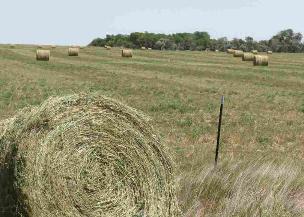
| Haying operations were in progress on the private farmlands within the park. |
| In general, we found this to be an interesting, excellent park to visit. We enjoyed the wildlife and birdlife. The scenery was fantastic and other worldly. We did note one large discrepancy within the park. The Ben Reifel Visitor Center at the northeast entrance to the park is the main center. It's modern with all the amenities and lots of personnel. We viewed a film there, saw exhibits and watched several ranger demonstrations. The White River Visitor Center is located on Ogalala Sioux reservation land. It's small, hot and had one Native American ranger on site. A stinky porta-potty was the only restroom and in 100F+ heat, it was rather unpleasant. Seems there's a trend here. |
| Next National Park along the way? Pipestone National Monument in Minnesota ... Are you coming? |
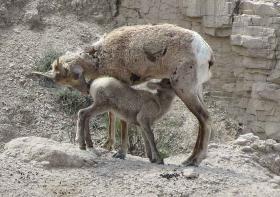
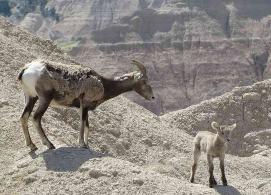
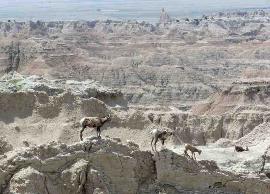
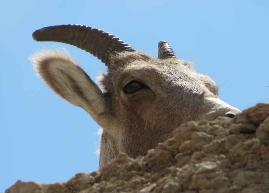
| There was a large population of mountain sheep in the park. They seemed to have no problem whatsoever maneuvering the rough, rocky precipices. We counted at least a dozen sure-footed lambs scampering along the narrow ridges, heading back to their moms for a snack every once in awhile. |
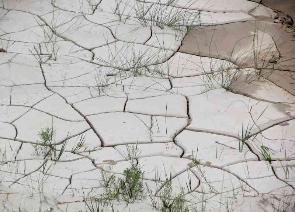
| This land give a whole new meaning to the word "parched". |